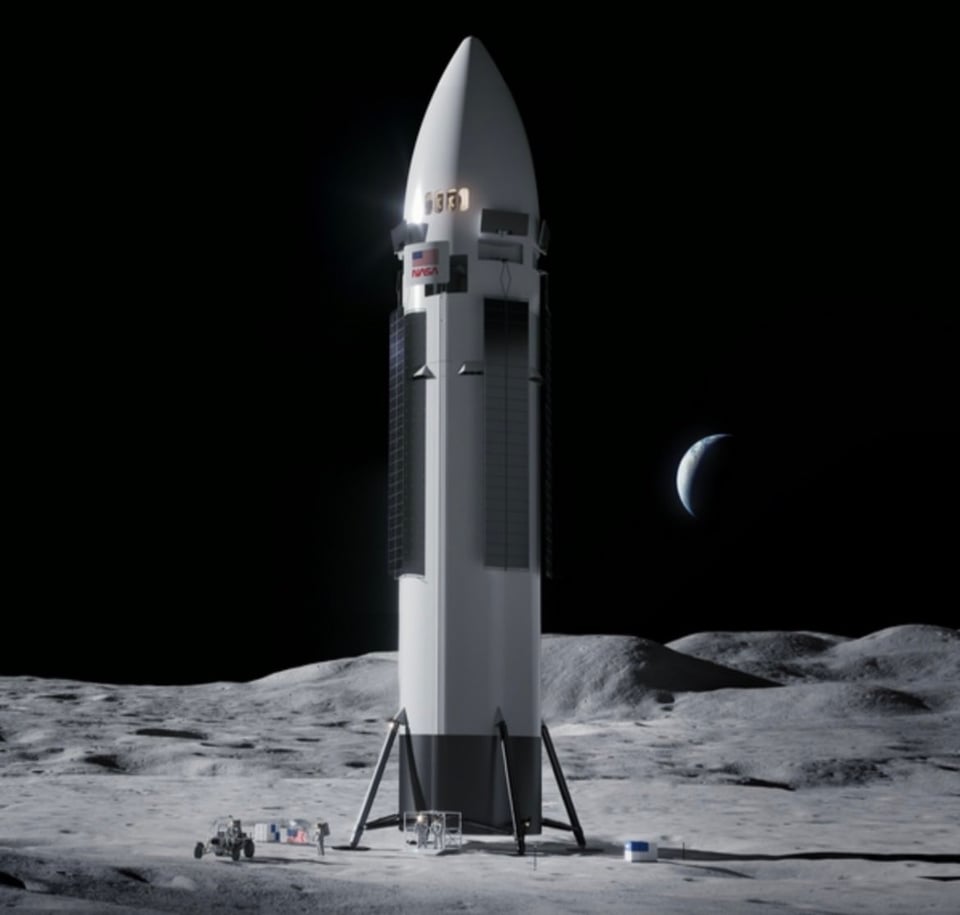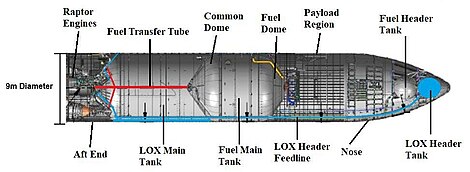I Don't Get Lunar Starship (SpaceX's Starship HLS)
For those who don't know, nearly three years ago NASA selected a lunar-landing variant of SpaceX's Starship as the craft to land humans on the Moon as part of the Artemis programme. But I can't see how this was the right choice.
Don't get me wrong. I think Starship could be a game-changer when it comes to Space Exploration. A fully reusable spacecraft (where the space shuttle not only wasn't fully reusable, but was more refurbishable than reusable), with the capacity to lift serious loads to orbit - that's clearly a game-changing proposition.
But while I confess to not being any kind of engineer, I really, really don't understand the use of a Starship variant as a lunar lander.

For starters, just look at the size of it (50 metres tall), and how top-heavy it looks. The thought of landing that on an unprepared surface gives me the heebie-jeebies.
Now take a look at that picture and see how small the astronauts are in comparison. Then take a look at where the door is (about three-quarters of the way up). Then see the elevator they're supposed to use to get up there. Really?
And then let's look at what it takes to get a single Starship HLS to the surface of the Moon. The steps are:
Launch a Starship variant configured to act as an Earth-orbit propellent store.
Launch between "10-ish" (SpaceX's estimate) and "high-teen's" (NASA's estimate) of Starships carrying fuel, which will dock with the propellent store Starship and transfer their fuel to it. (I think the uncertainty in numbers is based partly on how much fuel might be lost due to boiling off, but the fact that this part is so uncertain seems a bit mad).
Launch a Starship HLS which will dock with the propellant store Starship, refuel, then travel to the Moon where it will wait in Lunar orbit for the astronauts to arrive. (They're launching in an Orion capsule on top of an SLS rocket (a very expensive, expendable rocket derived from Shuttle technology).
So potentially, it could take getting on for twenty Starship launches for each mission to the Moon. Yes, I get that Starship is reusable, but even so, that seems like a lot. Especially, when it's to get a vehicle there that to my admittedly non-expert eyes looks totally unsuitable.
To me, when I think of what I'd want from a lunar lander, I'd be thinking of the following:
A craft designed from the start to work in a vacuum, rather than one derived from a craft designed to first launch through an atmosphere, and then re-enter back through an atmosphere.
A craft that's basically squat with a low of centre of gravity to make landings much safer on uneven terrain.
A craft where astronauts could exit close to the ground.
A craft where cargo would be unloaded close to the ground (think of cargo aeroplanes where they have a ramp that can lower to the ground for cargo to be taken out).
Starship's cargo bay apparently measures 17 metres tall by 8 meters in diameter.

Now if you look at the Dynetics ALPACA (which was rejected by NASA), that measures 4 metres by 4.8 metres. (I can't find its weight, but it was designed to be launched on a Vulcan Centaur rocket which has about a quarter of the payload of Starship). So I'm thinking that even if you needed to include an additional stage to send it from Earth orbit to the Moon, you'd still have space and mass to play with.
So wouldn't it make more sense to use one reusable Starship (standard variant) to lunch an ALPECA to the Moon?
And yes, I know that this lander was rejected partly because it didn't fulfil all of the required mission parameters, but tell me that this doesn't look like a more natural object to be landing on unprepared lunar surfaces?

Squat, near to the ground, and reusable if it can be refuelled in Lunar orbit. And I'm not the only one who's a fan. Check out this excellent video by the Angry Astronaut.